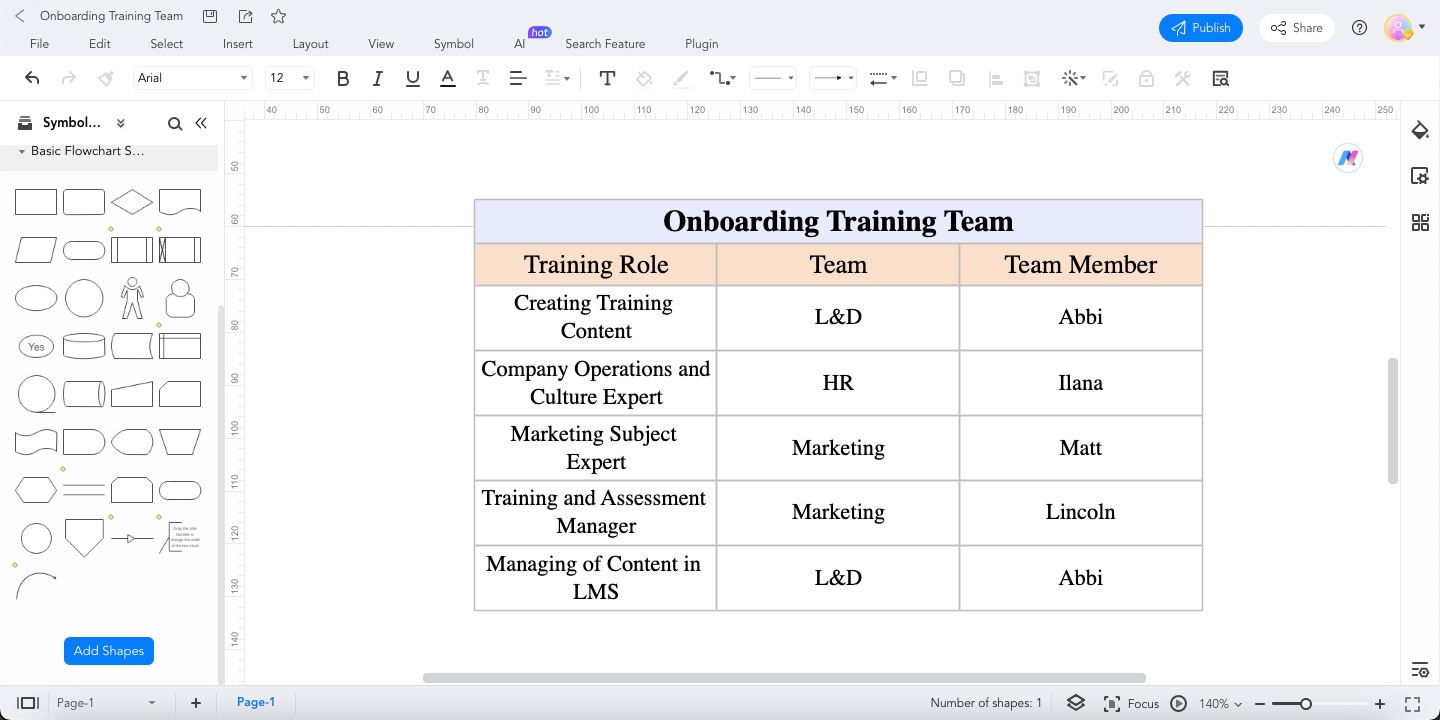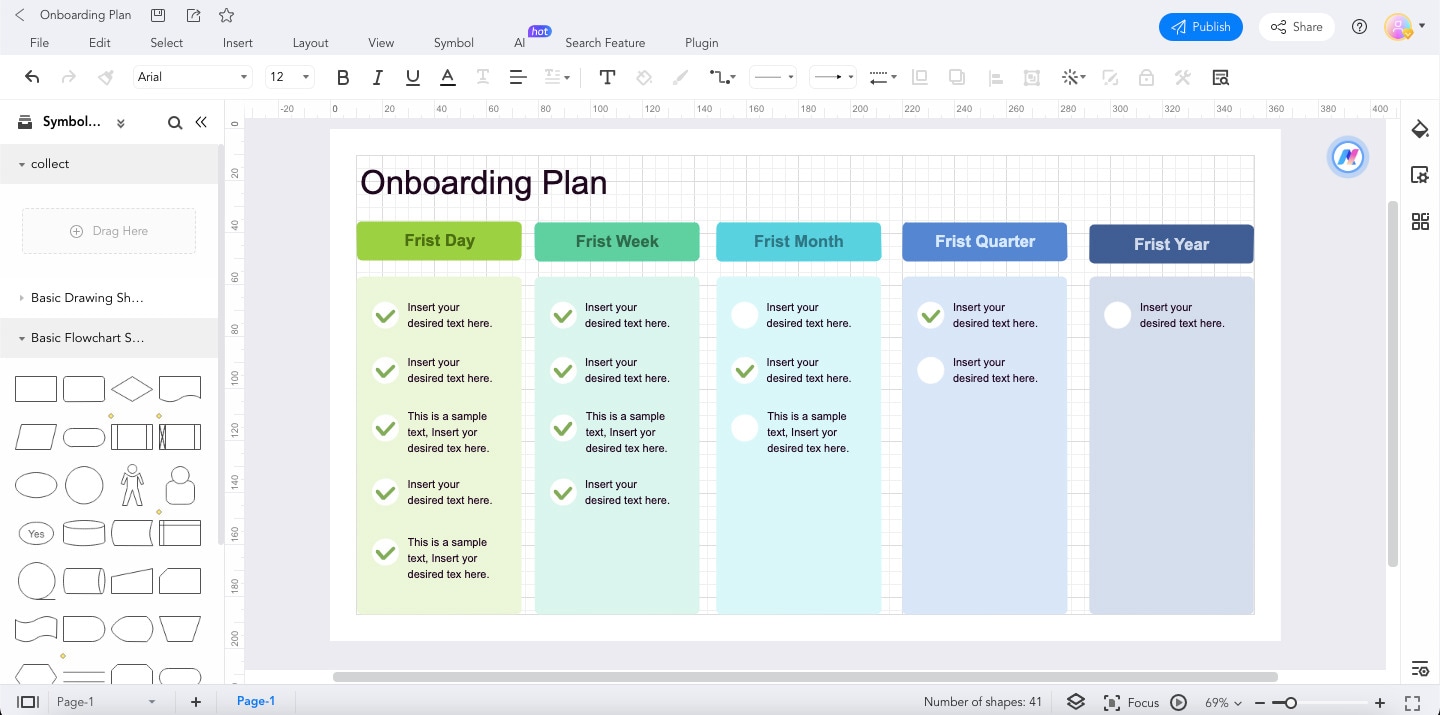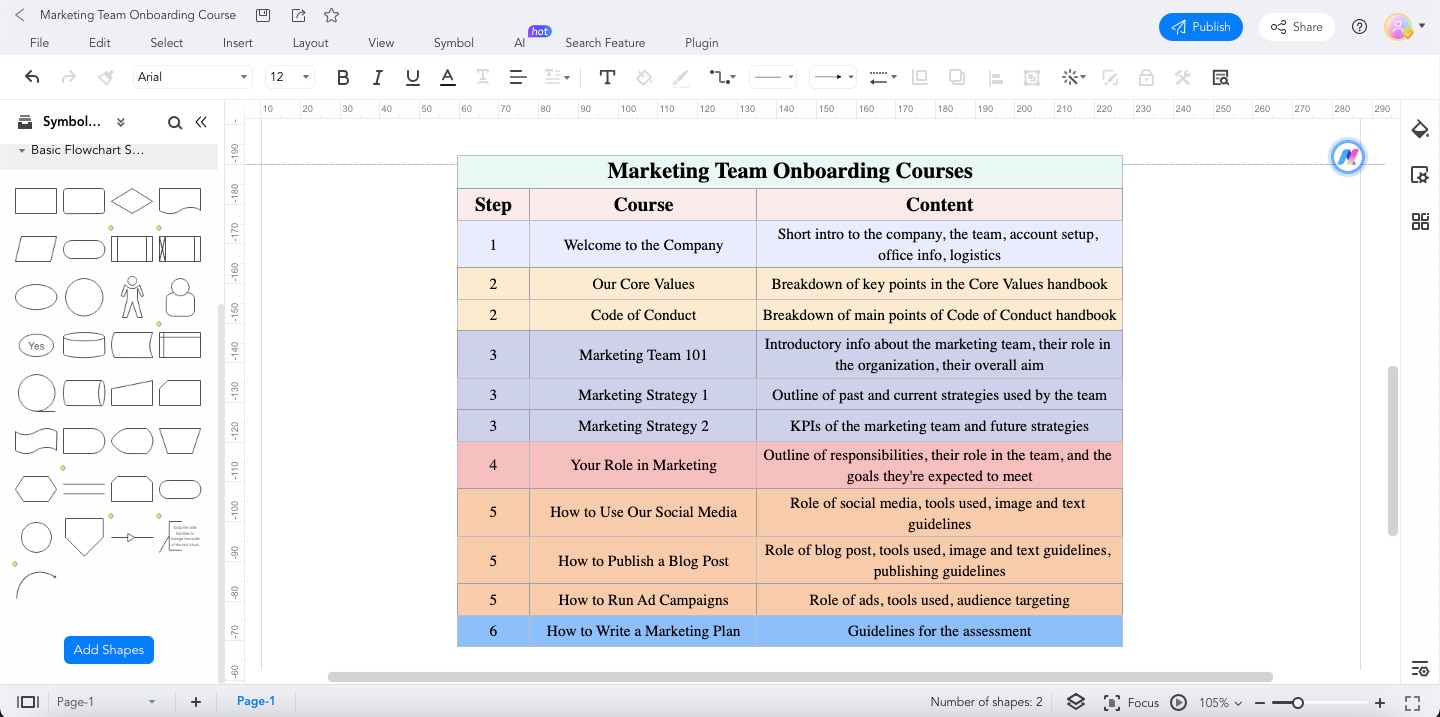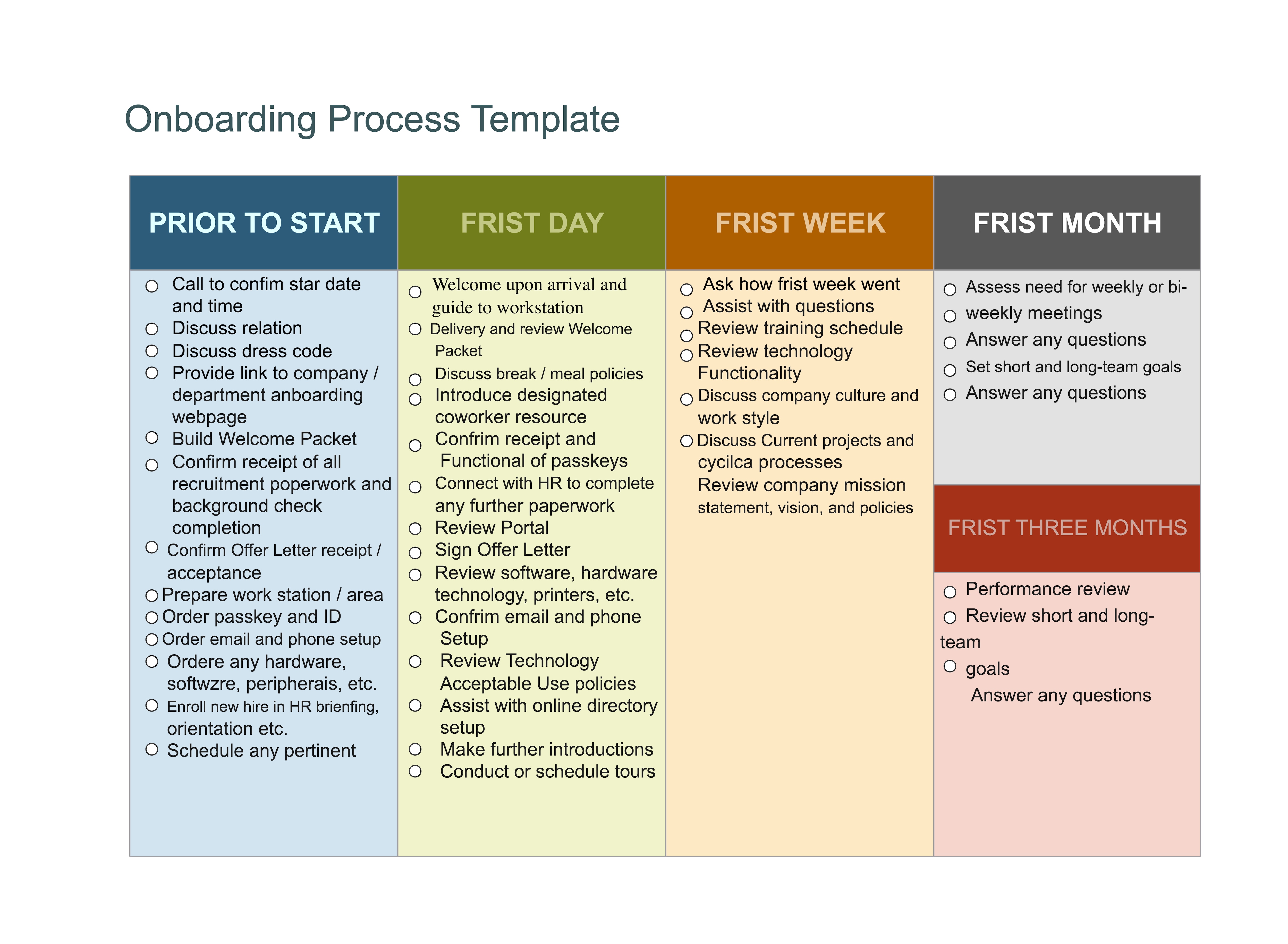In the business world, setting up a well-crafted onboarding plan is like laying a strong foundation for a sturdy building. It's crucial for ensuring new employees feel welcome and sets the stage for their success.
This article will guide you through the essentials of onboarding documents. You'll find practical insights, a sample onboarding plan for new employees, and all you need to streamline the process. So, if you aim to make your new employees feel at home and hit the ground running, read on – it's simpler than you might think!
In this article
Part 1: What Is Onboarding Plan
You might wonder, "What's the deal with onboarding plans?" Well, in the world of work, onboarding is like the warm welcome at the entrance to a new adventure. It's that friendly smile and guiding hand that new employees receive as they step into a company. Let's dive into what onboarding and onboarding plans are and why they're so important.
Power of Onboarding Plans
Onboarding is a fancy word for helping new employees settle into their roles and feel comfortable at their new workplace. Think of it as the roadmap that guides them through the early days. It's like your very first day at school but at work!
Now, let's talk about onboarding plans. These are like the secret sauce that makes onboarding smooth and effective. They're detailed, step-by-step guides that help the new employee and the company.
Benefits of Onboarding Plans
Here's why onboarding plans matter:
- Smooth Start. Onboarding plans ensure that new employees don't feel lost or confused. They know what to expect, where to go, and who to turn to for help.
- Confidence Booster. Feeling overwhelmed can be stressful. Onboarding plans boost confidence by providing a clear path for new employees to tackle their new roles.
- Team Integration. Onboarding plans encourage new employees to connect with their colleagues. When people feel like they're part of a team, they perform better.
- Time-Saver. No more wasted time figuring things out. Onboarding plans save time by giving all the essential information upfront.
- Retention Boost. When employees feel supported and prepared, they're more likely to stick around. Onboarding plans can improve employee retention.
- Company Culture. It's important to fit into the workplace culture. Onboarding plans introduce new employees to the company's values and expectations.
- Reduced Stress. Starting a new job can be nerve-wracking. Onboarding plans reduce stress by making the whole process feel manageable.
In a nutshell, onboarding plans are like a compass, helping new employees navigate the exciting journey in their new company. They make the transition smoother, faster, and much more enjoyable. In the next part of this article, you'll be able to explore the steps on how to develop an onboarding plan. So stay tuned for more!
Part 2: 6 Steps To Develop an Onboarding Plan
Okay, so now you know what onboarding and onboarding plans are. Now, it's time to roll up your sleeves and get into the nitty-gritty of creating a fantastic onboarding plan. Below is a simple, 6-step guide with onboarding plan templates created with Wondershare EdrawMax to help you through it. And guess what? You don't need to be an expert; anyone can do it!
Step 1: Identify the Purpose of Employee Onboarding
Before you begin planning content, it is essential to understand the purpose of onboarding a new employee – what is the end goal? Typically, "acquiring the necessary knowledge, skills, and behaviors to become effective organizational members and insiders" is the objective of the induction process. However, what does this imply specifically for your company? Having specific objectives in mind for what you wish to accomplish is crucial.
This ought to summarize:
- Setting the learner's expectations
- Outlining the competencies that your learner ought to acquire via onboarding
- Providing the new employee with a transparent code of conduct and company culture
Step 2: Form an Onboarding Training Team
The next stage in developing an eLearning onboarding strategy is determining the team. This varies depending on your organization's size, structure, and role. Some consider it an HR, L&D, or Training and development duty with little to no input from others. Others see it as a collaborative effort involving managers, HR, and coworkers. The most effective onboarding should be a collaborative endeavor, including all aspects of your company.

Step 3: Invest in Necessary Tools
Team members, material, and schedules are all important factors to consider while onboarding. One of the most crucial is planning for the tools you will use to onboard your new staff and how these will impact the onboarding process. It's critical to consider the tools you'll need (such as an HR system) to collect resources and communicate with employees.
Step 4: Plan Your Onboarding Process
With your team and goal in place, you can devise an onboarding approach to guide your new hires toward their objectives. The easiest and most effective way is to construct learning steps or "mini" goals. When these are combined, they form a road to the end goal. These phases should be taken incrementally to construct a targeted plan, with each building on the last.
These steps may include a combination of online and in-person instruction. Some may last only a few hours, while others may take days or weeks to complete. However, as you can see, they provide a clear path for your student to reach that all-important end goal. Put a timeframe against these phases if possible, and try to determine how long the procedure will take.
Note: This may differ for each person and team, but recognizing the time required to train can assist you in developing a more efficient, planned strategy.

Step 5: Map out Your eLearning Courses for Onboarding
With your steps in place and ready to assist you, it's time to get started on course content. Content is frequently perceived as an overpowering component of any training, but it does not have to be. It's also recommended that you consider your audience first. Put yourself in their position and consider the following:
- What information do they require?
- What do I want people to understand?
- What is their starting point?
- What do I want them to be able to show by accomplishing their goal?
Proceed to your subject matter experts from here. They can offer you with all of the resources you need to give training at each stage. Examine your team and the resources you have available. You'll probably discover that you already have much of the required stuff.

Step 6: Determine How You Will Track Your KPIs
Knowing your KPIs and how you intend to measure them is the final stage in developing an onboarding strategy. Many companies skip this stage. They create a robust onboarding strategy but lack defined KPIs and no mechanism to measure its performance.
You might have a variety of KPIs depending on your objectives. The most common examples are return on investment and time vs. effort. There are numerous ways to measure these, including cost per new hire onboarding, retention rates, and onboarding process efficiency. Whatever it is, know what you want to measure and have a strategy in place so that your team understands the true benefit of onboarding.
And that's it! Those are the 6 steps in developing an onboarding plan. Remember, your onboarding plan is like a roadmap for your new employees. It guides them, ensuring they're comfortable and ready to start their journey in your company!
Conclusion
Onboarding is like a friendly hello as you step into a new workplace. It's all about making new employees feel comfortable, prepared, and ready to take on their roles. This article discussed how onboarding plans are the secret sauce to a smooth start. It also gave you a simple 6-step guide to creating an onboarding plan, making it accessible to anyone.
It's a good idea to consider using EdrawMax for your onboarding plan. It's a user-friendly tool that simplifies the entire process. With its help, you can create an onboarding plan that's effective and easy to understand, just like this article! So, go ahead and give it a try, and watch your onboarding process flourish. Happy onboarding!





 below.
below. 
